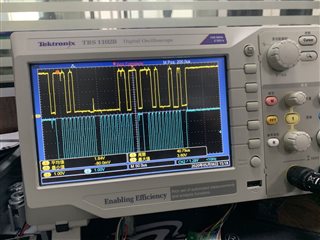When debugging IIC, it always crashes here. what is the problem。
nrfx_twim.c,line 441.
else
{
while (!nrf_twim_event_check(p_twim, evt_to_wait))//forzen here
{
if (nrf_twim_event_check(p_twim, NRF_TWIM_EVENT_ERROR))
{
NRFX_LOG_DEBUG("TWIM: Event: %s.", EVT_TO_STR_TWIM(NRF_TWIM_EVENT_ERROR));
nrf_twim_event_clear(p_twim, NRF_TWIM_EVENT_ERROR);
nrf_twim_task_trigger(p_twim, NRF_TWIM_TASK_RESUME);
nrf_twim_task_trigger(p_twim, NRF_TWIM_TASK_STOP);
evt_to_wait = NRF_TWIM_EVENT_STOPPED;
}
}



